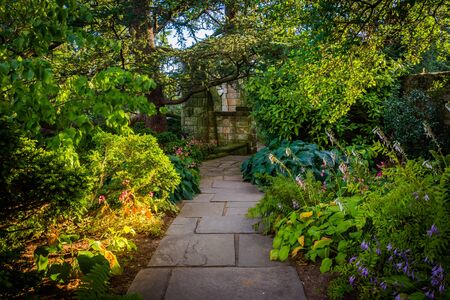1. Introduction to Backyard Insectaries
Imagine your backyard as a vibrant, living tapestry—a place where nature’s smallest helpers work together to create balance and beauty. Building a backyard insectary is about inviting beneficial insects into your garden so they can take on the role of natural pest control. This approach not only reduces the need for chemical sprays but also supports local ecosystems, making your outdoor space healthier for people, pets, and pollinators alike.
What Is a Backyard Insectary?
An insectary is simply an area in your yard intentionally planted and designed to attract, shelter, and feed “good bugs.” These helpful insects include ladybugs, lacewings, parasitic wasps, and bees—tiny allies that prey on garden pests or help pollinate your plants. By giving them a welcoming home, you’re encouraging nature to do what it does best: keep things in harmony.
Why Build an Insectary?
Creating an insectary isn’t just about having fewer aphids on your roses or tomato hornworms on your veggies (though that’s a pretty great perk). It’s about contributing to the larger picture—helping local wildlife thrive, supporting the food web, and making your backyard part of a healthier environment for everyone. Plus, it’s an engaging way to connect with nature right outside your door.
Key Benefits of a Backyard Insectary
| Benefit | Description |
|---|---|
| Natural Pest Control | Reduces reliance on chemical pesticides by encouraging predatory insects to manage pests. |
| Pollinator Support | Provides food and habitat for bees and butterflies, boosting garden productivity. |
| Biodiversity | Enhances the variety of life in your yard, creating a more resilient ecosystem. |
| Educational Opportunities | A great way for families and kids to learn about ecology and observe nature up close. |
The American Approach: Local Flavor
In the U.S., gardening traditions celebrate both practical results and natural beauty. Whether you live in California’s Mediterranean climate or the Midwest’s prairie heartland, building an insectary means picking plants that fit your region and support native insects. Think wildflowers like coneflower or black-eyed Susan in the Midwest, or drought-tolerant sages out West. The key is to blend utility with aesthetic charm—creating something useful for bugs and beautiful for you.
2. The Good Bugs: Who They Are and Why They Matter
When you step into your backyard, you might notice tiny creatures buzzing, crawling, or fluttering around. Some of these are the “good bugs” — nature’s own pest control team. By understanding who they are and what they do, you can welcome them into your garden and let them help keep your backyard healthy.
Meet the Backyard Heroes
Let’s take a closer look at some of the most helpful insects commonly found in American gardens. These beneficial bugs work hard behind the scenes to protect your plants and encourage a balanced ecosystem.
| Insect | How to Spot Them | Main Role in Your Garden |
|---|---|---|
| Ladybugs (Lady Beetles) | Small, round, red or orange with black spots | Devour aphids, scale insects, and other soft-bodied pests |
| Lacewings | Delicate green or brown wings, golden eyes | Larvae eat aphids, mealybugs, thrips, whiteflies, and even small caterpillars |
| Native Bees | Variety of shapes and sizes; many are fuzzy and solitary (like bumblebees and mason bees) | Pollinate flowers, fruits, and vegetables for better harvests |
| Parasitic Wasps | Tiny and often overlooked; may resemble small flies or ants | Lay eggs inside or on pests like caterpillars and aphids, controlling their populations naturally |
| Ground Beetles | Sleek, dark-colored beetles that scurry along the soil surface at night | Prey on slugs, snails, cutworms, and other soil-dwelling pests |
The Importance of Beneficial Insects in Your Backyard
These good bugs aren’t just accidental visitors. They’re essential for keeping your garden thriving:
- Pest Control: Many beneficial insects feed on common garden pests. Ladybugs alone can eat thousands of aphids in their lifetime.
- Pollination: Native bees play a crucial role in pollinating flowers, fruits, and veggies — leading to bigger blooms and more abundant harvests.
- Biodiversity: A garden rich in insect life is more resilient to disease and changing weather patterns.
A Natural Balance
Encouraging these helpful insects is about working with nature instead of against it. By making space for ladybugs, lacewings, native bees, and others, you invite a gentle balance that keeps harmful pests in check while supporting vibrant growth all season long.

3. Choosing the Right Plants to Attract Beneficial Insects
When you’re building a backyard insectary, plant selection is everything. By choosing native American plants and flowers, you create a welcoming oasis for helpful insects. These “good bugs”—like ladybugs, lacewings, and native bees—need food, shelter, and a safe place to lay their eggs. Native plants provide all of these, plus they add beautiful colors and texture to your garden landscape.
Why Native Plants Matter
Native plants are adapted to your local climate and soil, making them low-maintenance and resilient. They bloom in sync with local insect life cycles, supporting pollinators and pest-eaters when they need it most. Plus, they promote biodiversity by offering habitat for a wider range of beneficial insects than exotic or non-native species.
Top Native American Plants for Beneficial Insects
| Plant Name | Region | Benefits for Insects | Garden Appeal |
|---|---|---|---|
| Purple Coneflower (Echinacea purpurea) | Eastern & Central US | Attracts native bees, butterflies, and lacewings; seeds feed birds in fall | Large pink-purple blooms; upright habit adds vertical interest |
| Goldenrod (Solidago spp.) | Nationwide (varies by species) | Nectar source for late-season pollinators like bees and hoverflies | Burst of bright yellow color in late summer/fall; drought-tolerant |
| Milkweed (Asclepias spp.) | Nationwide (varies by species) | Essential for monarch butterflies; attracts predatory wasps and ladybugs | Sculptural clusters of orange, pink or white flowers; supports caterpillars and adults |
| Yarrow (Achillea millefolium) | Nationwide | Daisy-like flowers attract parasitic wasps, lady beetles, and bees | Feathery foliage; spreads easily; blooms in a range of soft pastels or white |
| Black-Eyed Susan (Rudbeckia hirta) | Eastern & Central US | Pollen source for bees; attracts soldier beetles that eat aphids and pests | Cheerful golden-yellow flowers with dark centers; long blooming season |
| California Poppy (Eschscholzia californica) | Western US (esp. California) | Lures native bees and hoverflies that prey on aphids and scale insects | Bright orange flowers; fine blue-green foliage; thrives in dry soils |
| Aster (Symphyotrichum spp.) | Nationwide (species vary) | Blooms late in the season for migrating butterflies & predatory insects like minute pirate bugs | Daisy-like purple, pink or white flowers; good cut flower; extends color into fall |
| Lupine (Lupinus perennis) | Northeast & Midwest US | Nectar-rich spikes support bumblebees and ladybugs; fixes nitrogen in soil | Tall spires of blue/purple flowers; attractive foliage adds texture to beds and borders |
| Culver’s Root (Veronicastrum virginicum) | Eastern US & Midwest prairies | Tall flower spikes attract butterflies, native bees, and predatory wasps | Slim white flower wands rise above foliage for elegant structure |
| Bee Balm (Monarda fistulosa) | Nationwide (especially East & Midwest) | Aromatic blooms lure bees, butterflies, hummingbirds, and beneficial wasps | Pincushion-like lavender-pink flowers; fragrant leaves can be used in tea |
Tips for Planting Your Insectary Garden
- Diversity is key: Mix different shapes, sizes, and bloom times so your garden has something for insects all season long.
- Avoid pesticides: Even organic sprays can harm beneficial bugs—let nature do the work!
- Add layers: Combine tall perennials with groundcovers and grasses to offer hiding places for larvae and adults alike.
- Create clusters: Group similar flowers together so insects can easily find what they need.
The Beauty of Biodiversity in Your Backyard Haven
By planting native American beauties throughout your yard, you’ll build a vibrant sanctuary where helpful insects thrive—and your garden will be more colorful, lively, and resilient all season long!
4. Designing Your Insectary: Layout and Aesthetic Considerations
Creating a backyard insectary is about more than just planting flowers for beneficial bugs; it’s also an opportunity to elevate your garden’s beauty and harmony. In the U.S., where outdoor living spaces are an extension of the home, your insectary can become a stunning focal point while supporting natural pest control. Here’s how to blend function with flair:
Choose the Right Spot
Select a sunny location, as most beneficial insects love warmth and light. Position your insectary near vegetable beds or fruit trees for maximum impact, but ensure it’s visible from patios or windows so you can enjoy both its beauty and its buzzing activity.
Integrate with Existing Design
Your insectary should flow naturally with your current landscape style—whether that’s modern, cottage-inspired, or native prairie. Use similar edging, mulch, or pathways to connect new plantings to what’s already there. Think of the insectary as a “garden room” within your overall yard layout.
Planting Patterns for Beauty & Function
| Plant Grouping | Visual Effect | Insect Benefit |
|---|---|---|
| Clusters of Same Species | Bolder color blocks, easy maintenance | Easier for insects to locate resources |
| Layered Heights | Lush, dynamic look (tall at back, short in front) | Diverse habitats for different insects |
| Curving Borders | Softer, organic lines blend into the yard | Creates sheltered microclimates |
| Punctuated with Garden Art or Stones | Adds personality and structure year-round | Resting spots for pollinators and predators |
Balance Color and Texture Year-Round
Select plants that offer blooms from early spring through fall—think coneflowers, yarrow, sunflowers, and goldenrod. Mix leafy textures like feathery dill or fennel with bolder leaves such as milkweed. Don’t forget evergreen herbs like rosemary or lavender for winter interest and shelter.
Tidy Edges, Wild Heart
Keep insectary borders neat with low edging or contained beds so wildflower exuberance looks intentional rather than overgrown. Mulch paths invite exploration without muddy shoes and help define spaces visually.
A Harmonious Backyard Habitat
An artfully designed insectary enhances curb appeal while inviting beneficial bugs to thrive. With thoughtful plant choices and creative layout, you’ll enjoy a garden that’s both beautiful and brimming with life—nature working for you in style.
5. Supporting and Maintaining Your Insect Community
Minimizing Pesticide Use for a Healthier Habitat
If you want your backyard insectary to thrive, reducing or even eliminating chemical pesticides is key. Many pesticides don’t just target the “bad bugs”—they can also harm the helpful insects you’re trying to attract. Instead, try these garden-friendly alternatives:
| Pest Problem | Eco-Friendly Solution |
|---|---|
| Aphids | Spray with a mix of water and a few drops of dish soap; introduce ladybugs |
| Caterpillars | Handpick or use Bacillus thuringiensis (Bt), a bacteria safe for beneficial insects |
| Spider Mites | Wash leaves with water spray; encourage predatory mites by planting ground covers |
Providing Water Sources for Your Beneficial Bugs
Just like birds, insects need water too! Even the smallest water source makes a difference. Place shallow dishes filled with pebbles and water around your garden. The pebbles give bees, butterflies, and beetles a place to land and drink without risking drowning. Change the water every couple of days to prevent mosquitoes from moving in.
Simple DIY Water Station Steps:
- Find a shallow dish or saucer.
- Add a layer of clean pebbles or small rocks.
- Pour in enough water so the tops of the rocks are just above the surface.
- Place it in a shady spot near flowering plants.
Regular Garden Maintenance: Keeping It Inviting for Good Bugs
Your insect community will flourish if you keep things tidy but not too manicured. Here’s how to strike that balance:
- Leave Some Leaves: Let a few piles of leaves or twigs remain—these provide shelter for predatory beetles and spiders.
- Diversify Plantings: Grow clusters of different flowers and herbs throughout your yard to offer food sources all season long.
- Prune With Purpose: Trim dead stems only after spring arrives, as overwintering insects may be using them as homes.
- Avoid Overwatering: Damp conditions can lead to mold and fungus gnats; keep soil healthy and well-drained.
Your Backyard Insectary Checklist
| Task | How Often? | Why It Matters |
|---|---|---|
| Add fresh water to bug stations | Every 2-3 days in summer | Keeps pollinators hydrated and happy |
| Inspect plants for pests & beneficials | Weekly during growing season | Catches problems early and monitors insect populations |
| Tidy up excessive debris—but leave some habitat spots! | Once per month or as needed | Prevents disease but keeps shelter available for good bugs |
Create a welcoming environment, nurture your insect allies, and watch as nature helps protect your backyard sanctuary—all with just a little thoughtful effort each week!
6. Observing and Learning: Making the Most of Your Backyard Insectary
Turning your backyard into an insectary is just the beginning—what comes next is a journey of discovery and connection with the natural world right outside your door. Observation helps you truly understand how beneficial insects work to keep pests in check, and it’s a wonderful way to engage your family and neighbors in appreciating local biodiversity.
Encouraging Daily Observation
Spend a few minutes each day strolling through your garden. Look closely at flowers, leaves, and stems for signs of insect activity. Notice which plants attract the most pollinators or where ladybugs like to hide. Bring your kids along—children are natural explorers, and observing bugs together can become a cherished family ritual.
Documenting Insect Activity
Keeping a simple record of what you see can be both fun and helpful. Try using a notebook, phone app, or even a shared online document with your family or neighbors. Here’s an easy table to get you started:
| Date | Insect Spotted | Location in Garden | Activity Observed |
|---|---|---|---|
| April 10 | Lacewing | Tomato patch | Hunting aphids |
| April 12 | Bumblebee | Zinnias near fence | Pollinating flowers |
| April 13 | Ladybug larva | Rose bush | Crawling on leaves |
Sharing What You Learn With Others
Talk about your discoveries with friends, family, or neighbors. Invite them over for a mini “bug safari” or share photos on social media. Swapping stories about garden finds or pest control wins helps everyone appreciate the value of good bugs. If you have kids, encourage them to present their findings at school or during neighborhood gatherings—it’s a great way to spark curiosity.
Tips for Fostering Backyard Biodiversity Appreciation:
- Create simple bug ID charts for the whole family to use.
- Host a “backyard bug day” once a season to observe changes over time.
- Encourage kids to draw pictures or write stories about their favorite garden insects.
- Share extra seeds or plants that attract beneficial insects with neighbors.
- Connect with local gardening groups or online forums to swap tips and sightings.
The more you observe, record, and share, the deeper your connection will grow—not just with your backyard but also with your community. Together, you’re nurturing an appreciation for the little creatures that make our gardens thrive.


